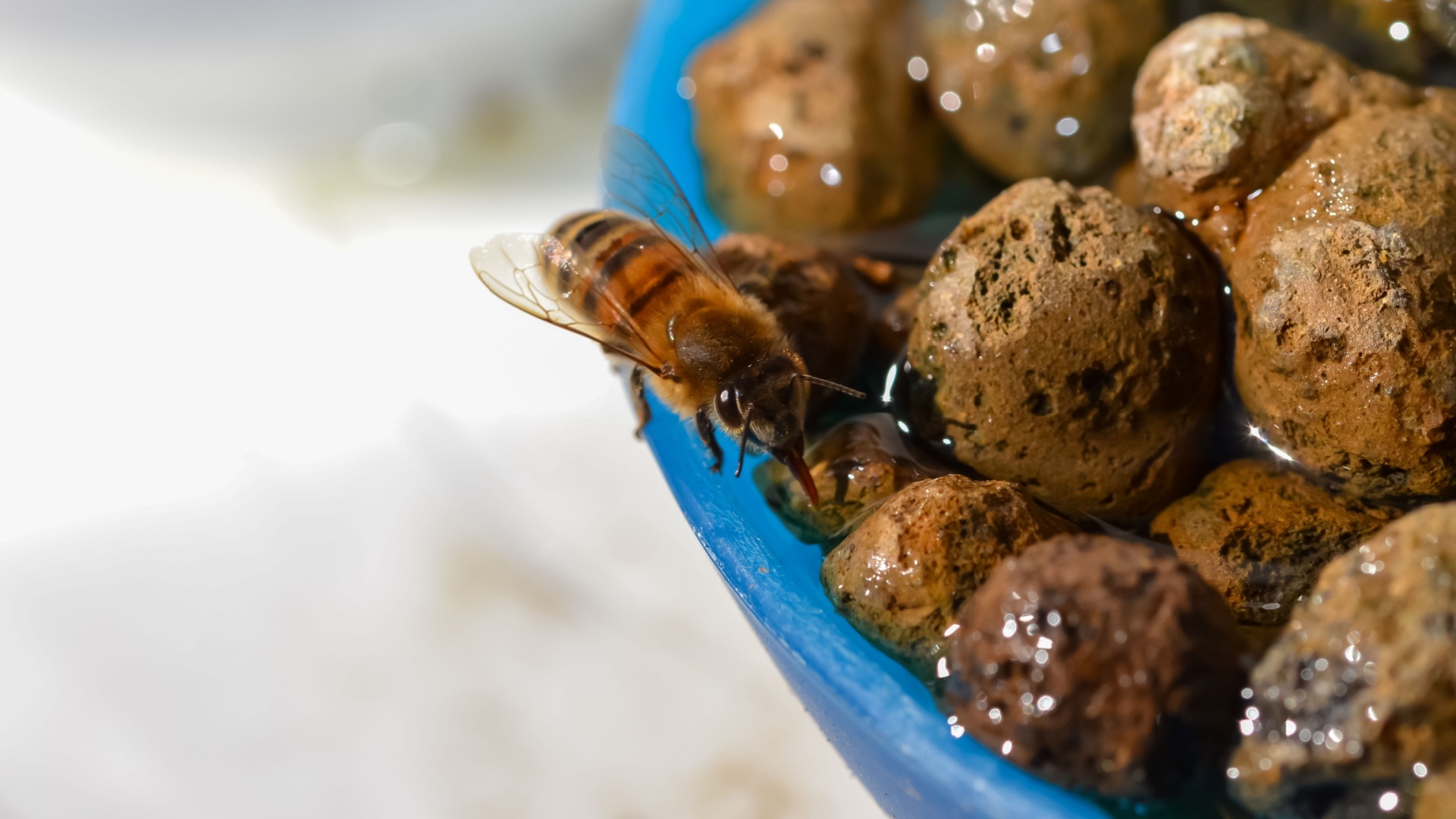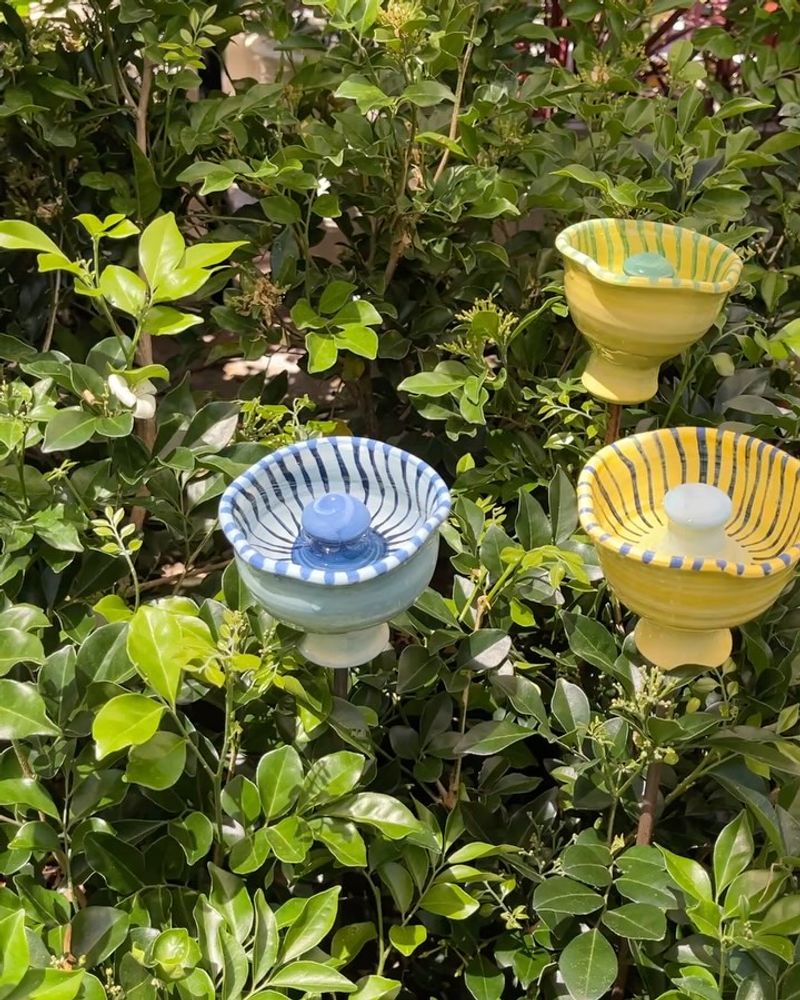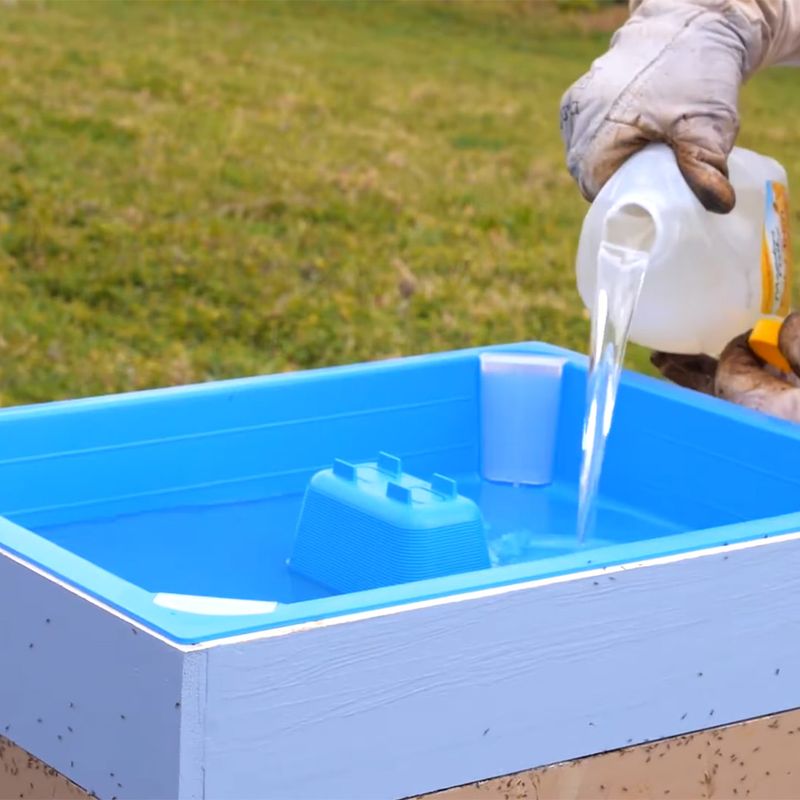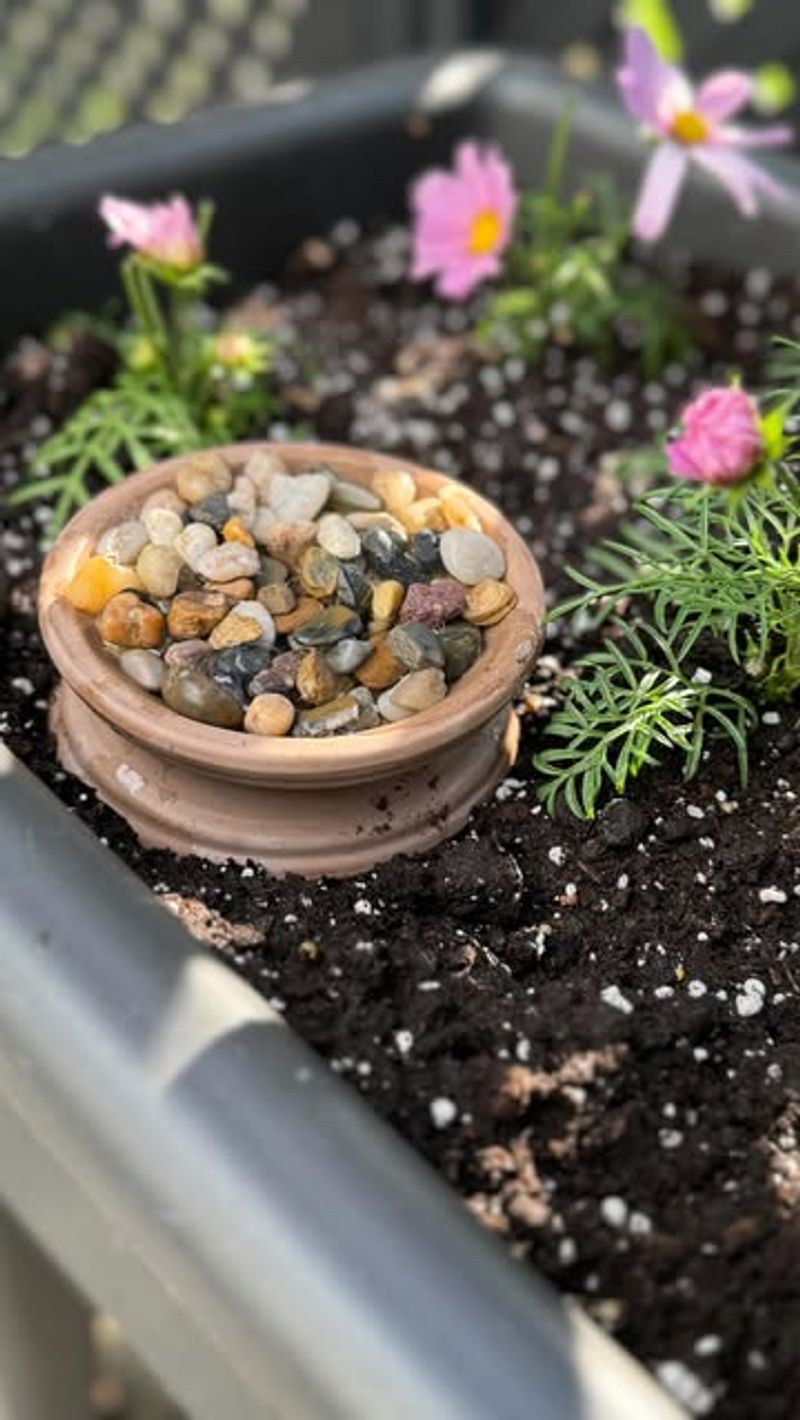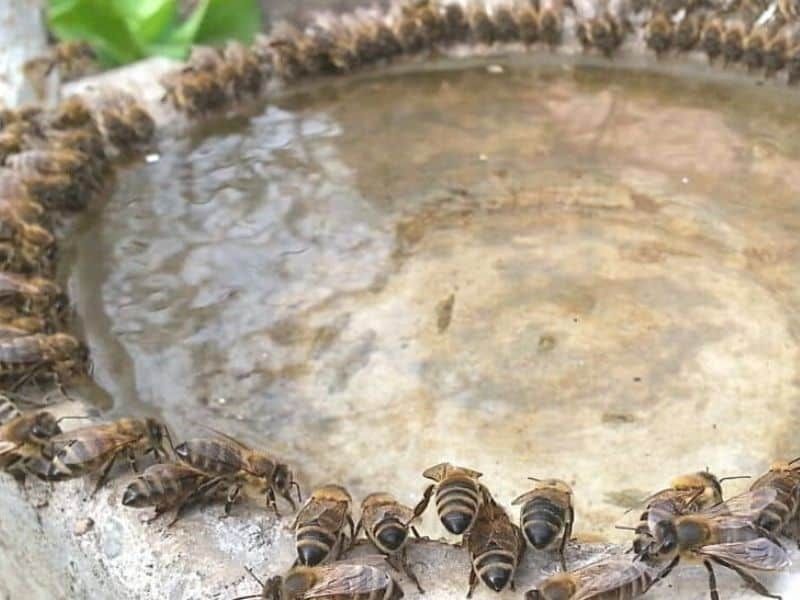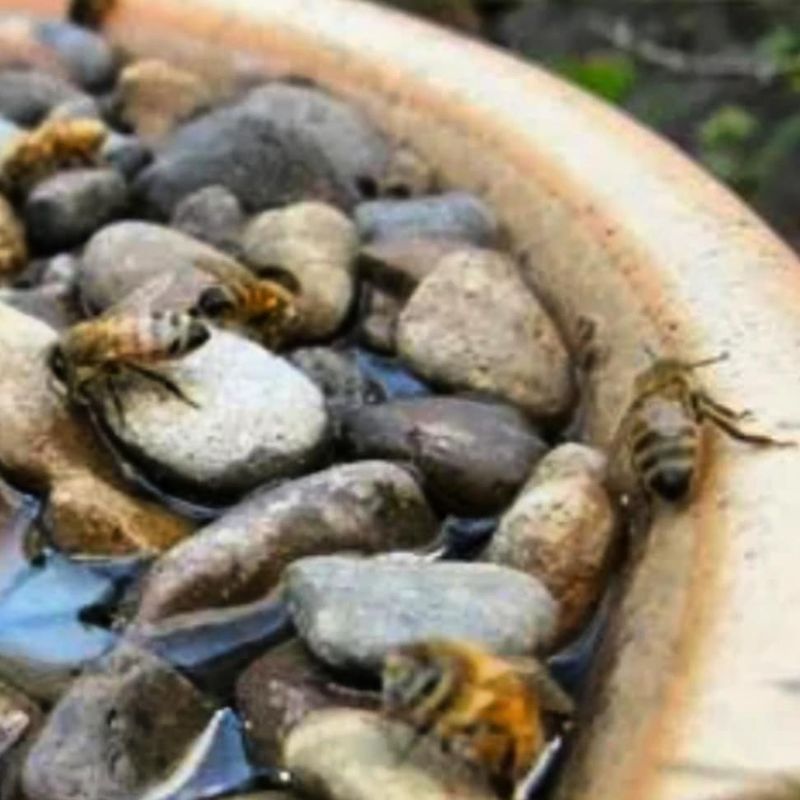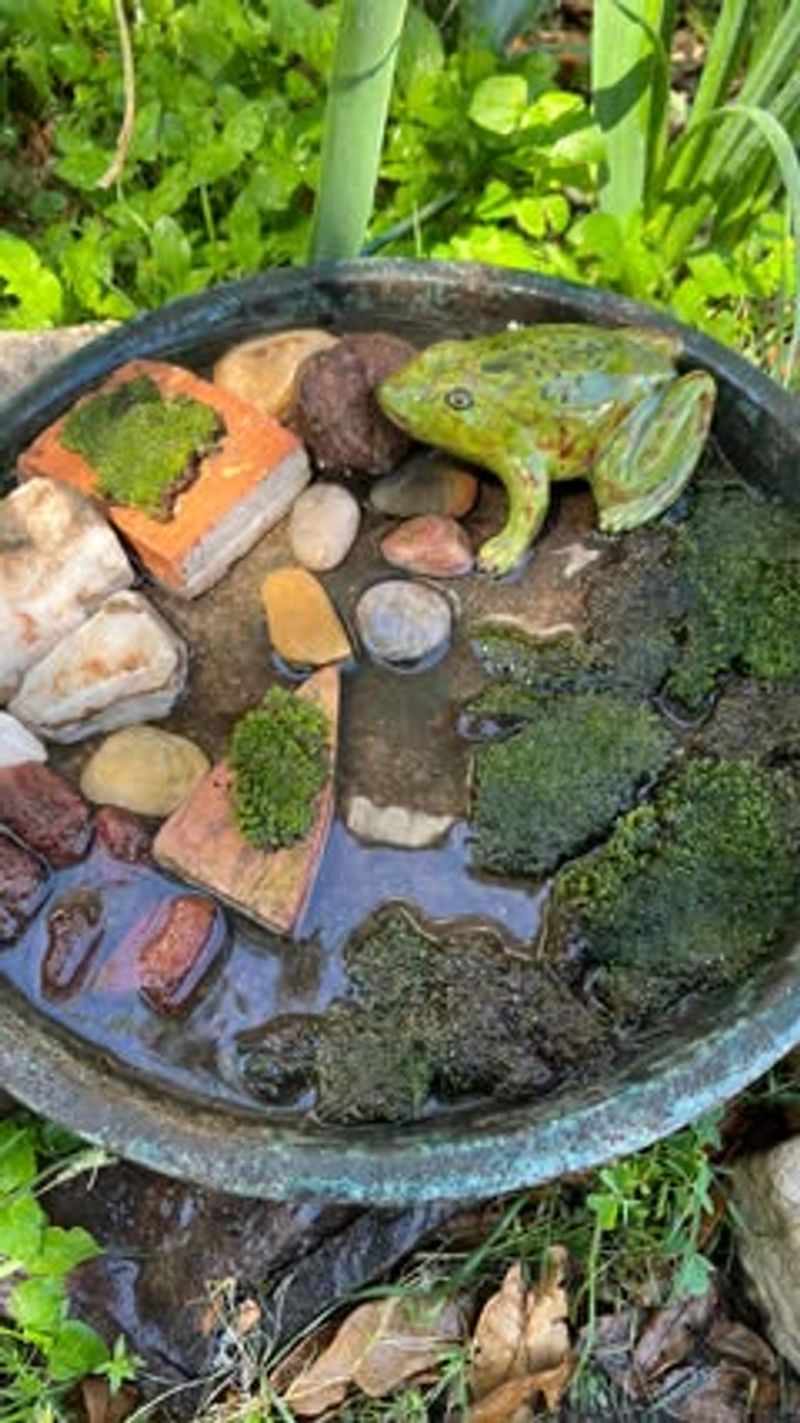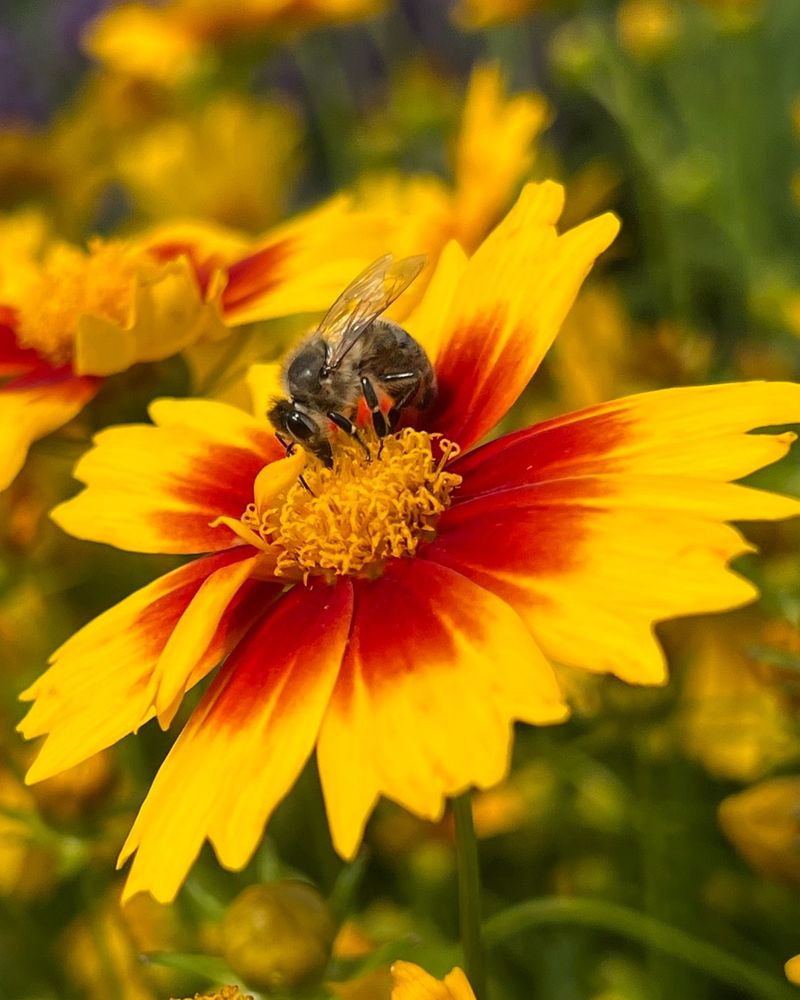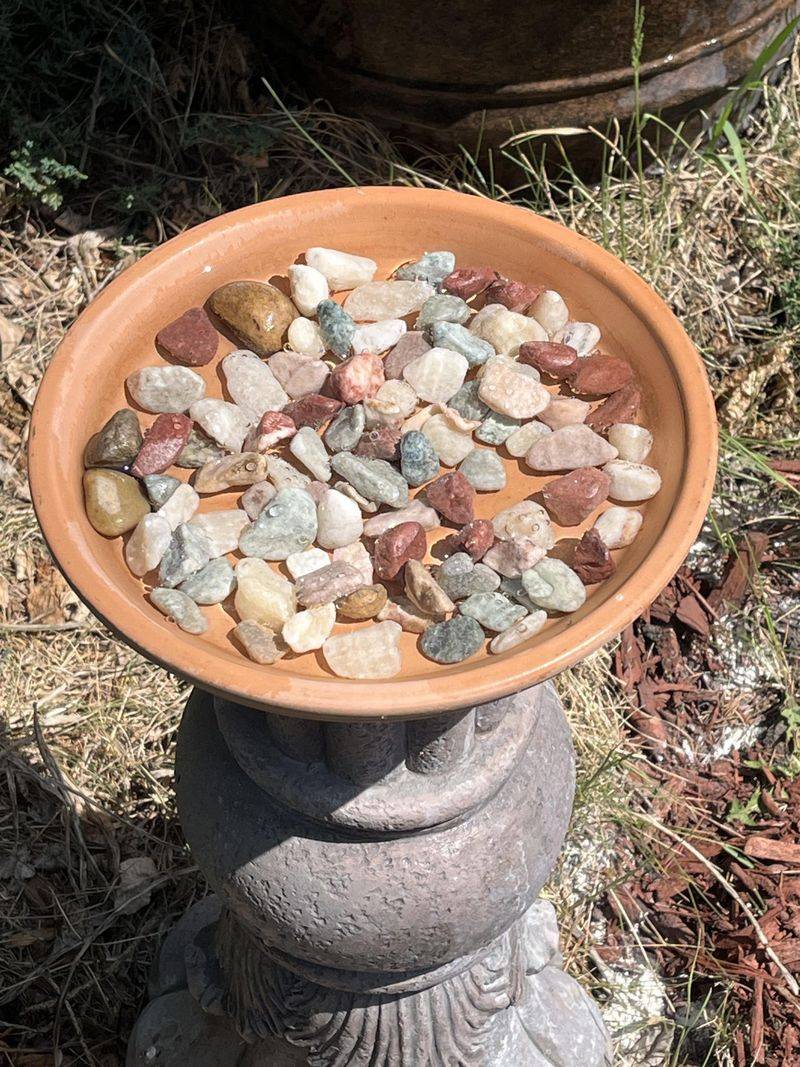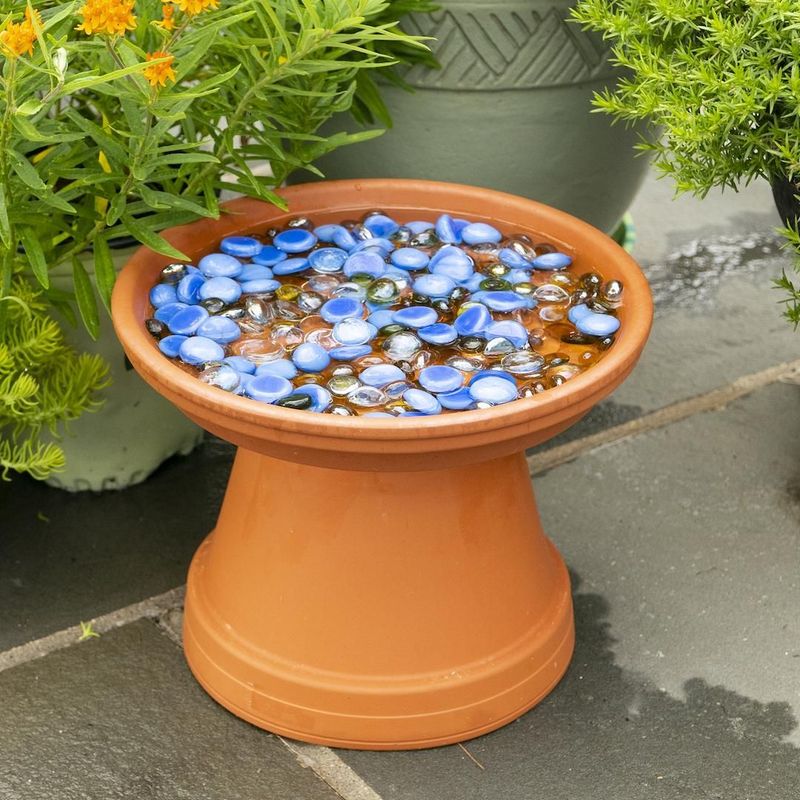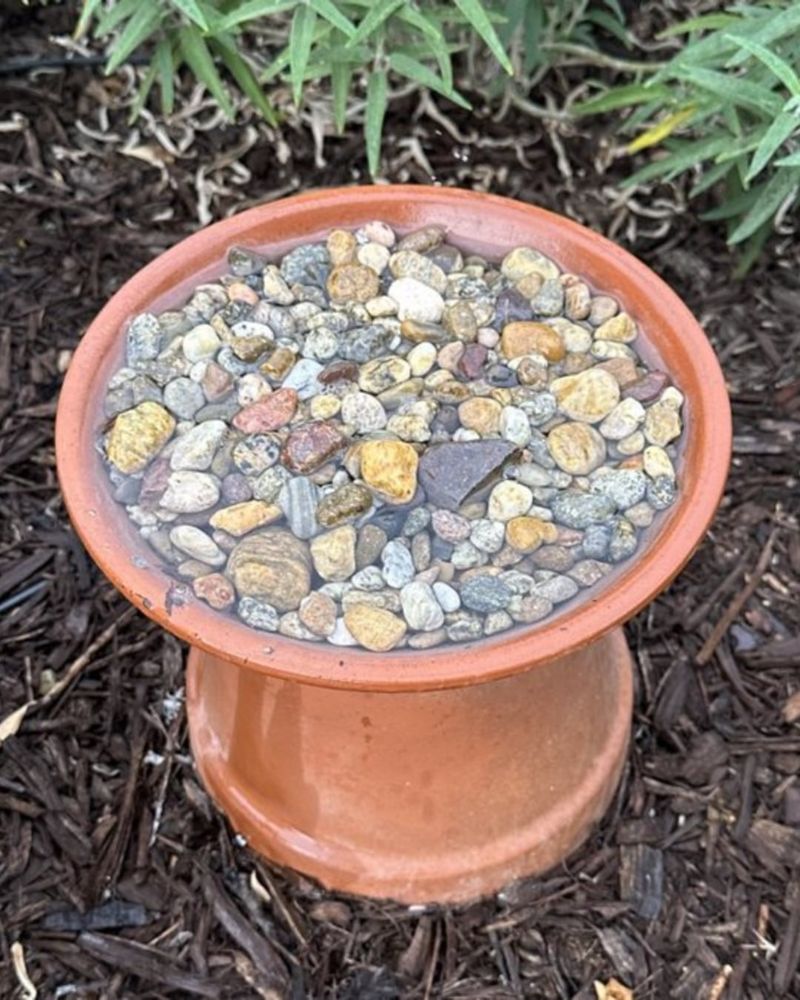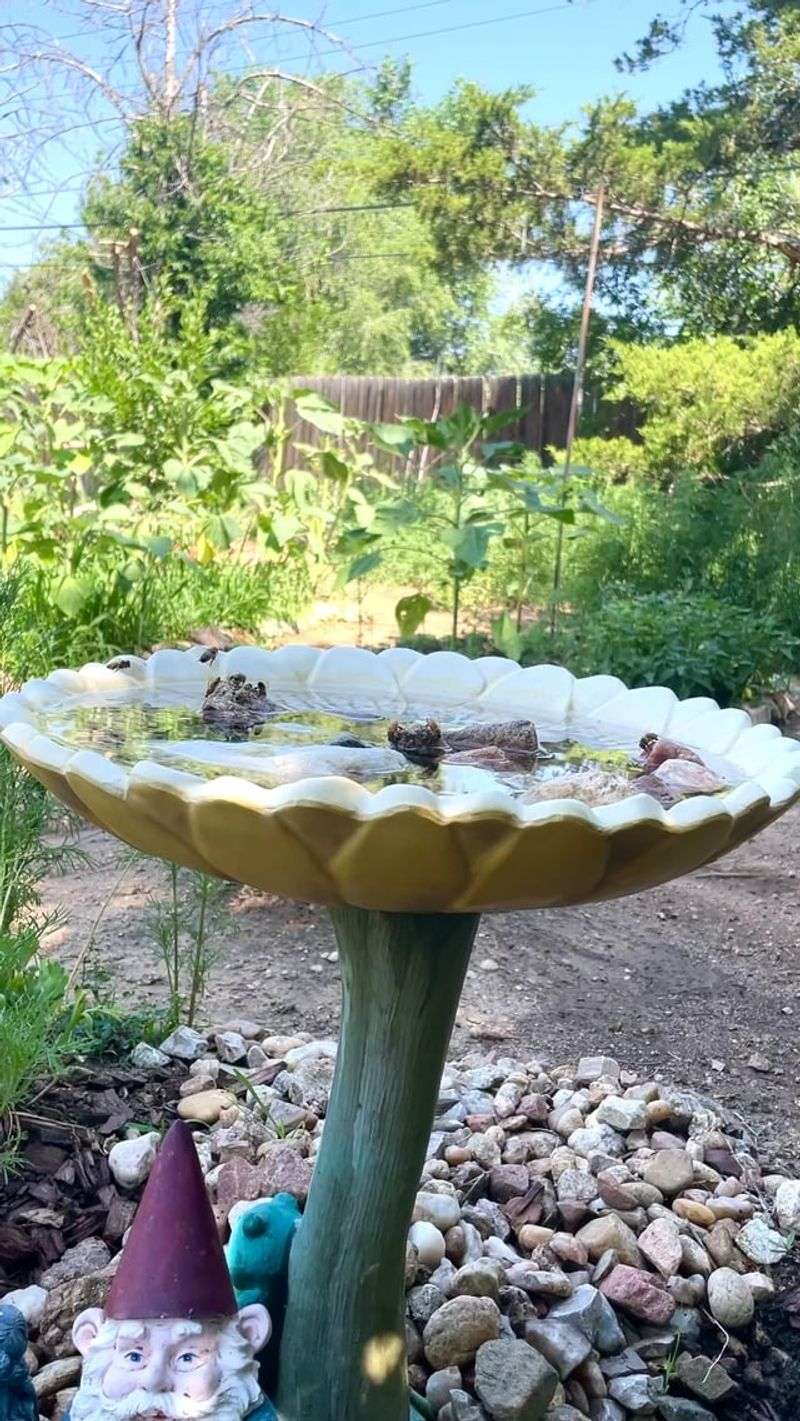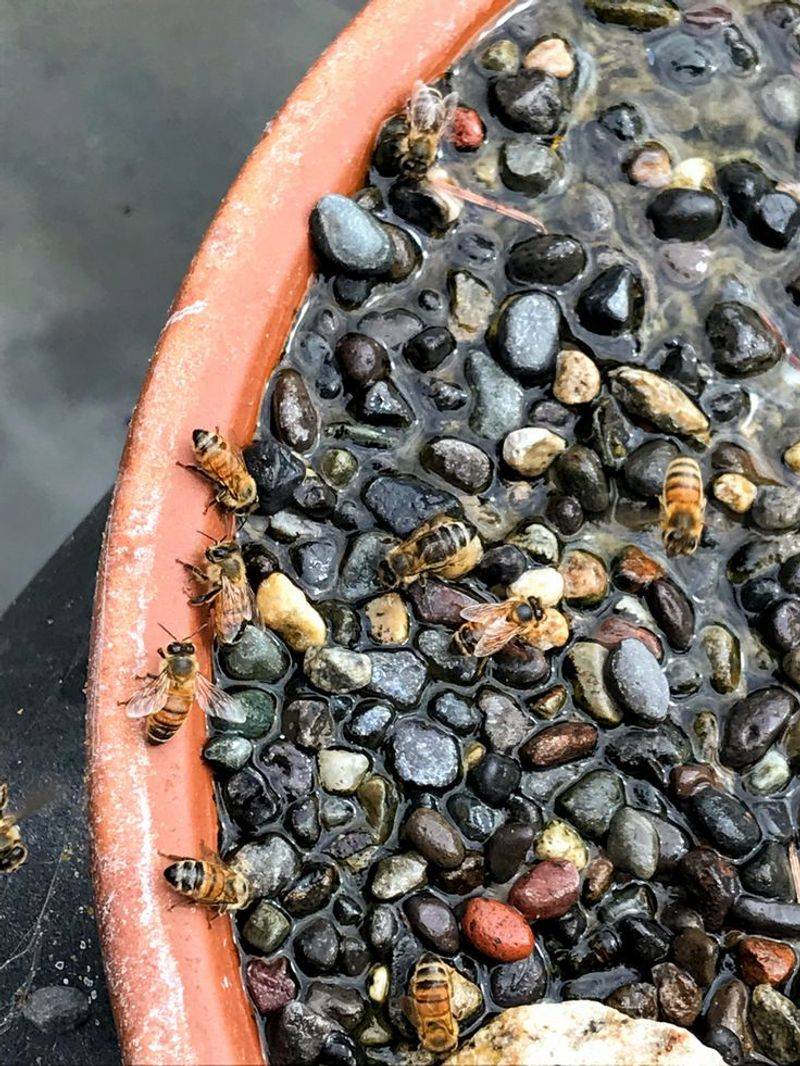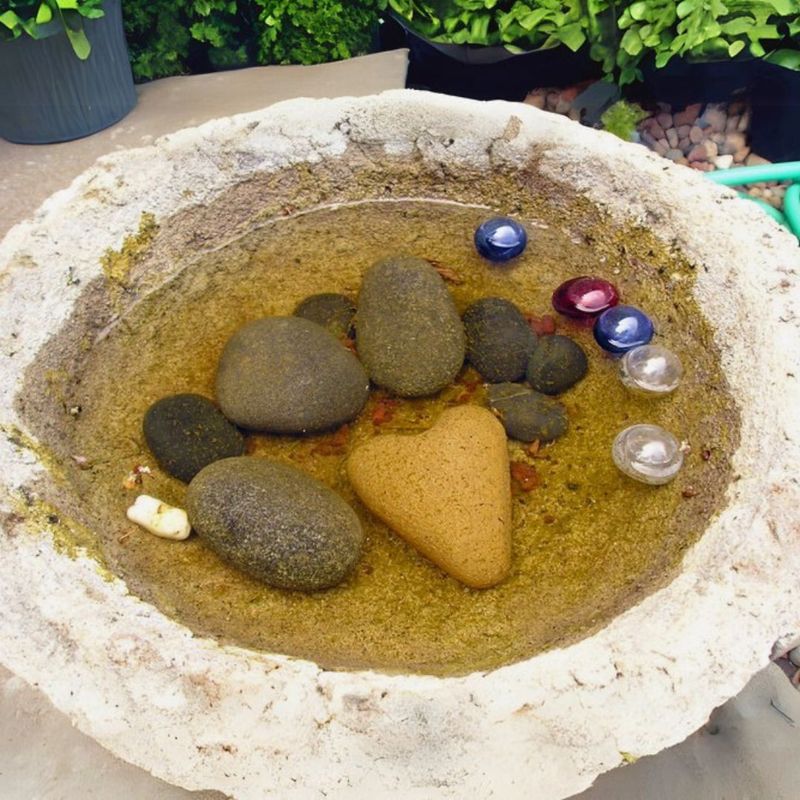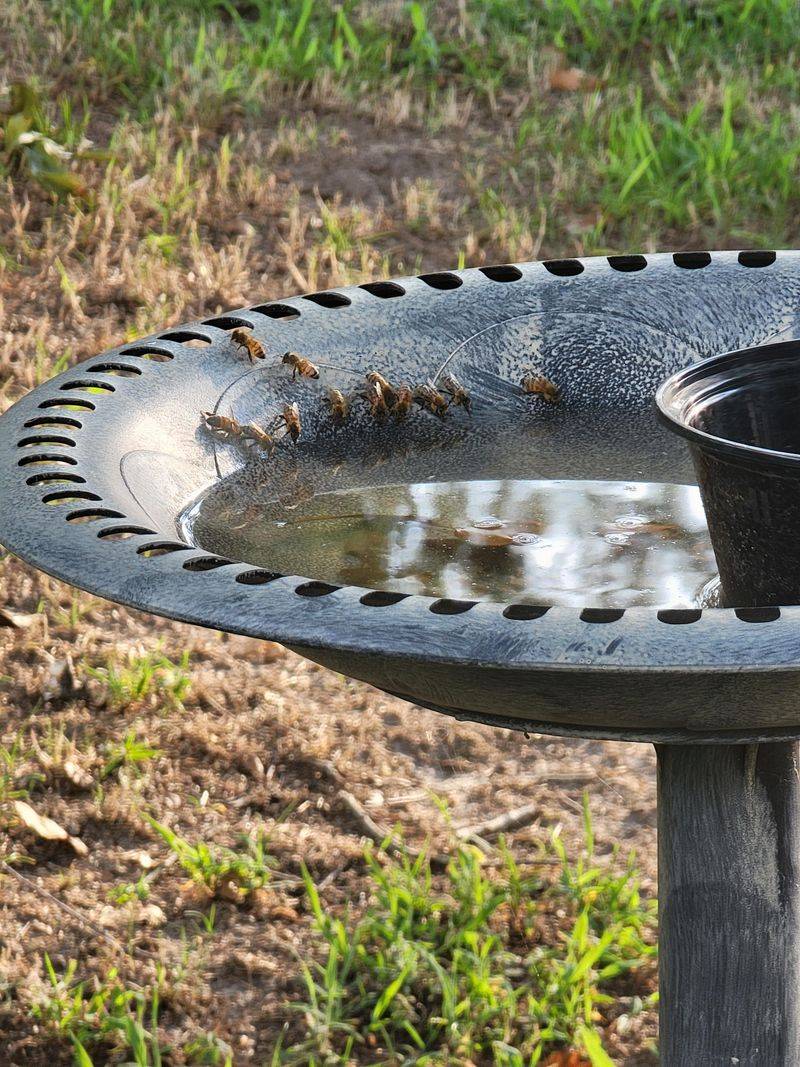Bees are vital to your garden—but extreme heat puts their survival at risk. Without access to clean water, they can become dehydrated and disoriented.
The good news? You can help. Creating a bee-friendly watering station takes just a few minutes and a handful of supplies. These 15 easy steps could make all the difference for your local pollinators.
1. Pick The Perfect Spot
Find a quiet, sunny location in your garden where bees already visit. Morning sun is ideal since bees are most active earlier in the day. Place your station away from high-traffic areas to avoid disturbing the bees.
Remember that bees need to feel safe while drinking, so choose a spot that’s somewhat protected from strong winds and not too close to bird feeders or pet areas.
2. Gather Your Supplies
You’ll need a shallow container like a plant saucer, pie dish, or bird bath. Grab some marbles, pebbles, or corks to create landing spots. These materials prevent drowning by giving bees safe places to perch while drinking.
Other helpful items include twigs, wine corks cut in half, or decorative glass beads. The goal is to provide various textures and heights for different bee species to land on.
3. Clean Everything Thoroughly
Wash your container and landing materials with plain water only. Bees are sensitive to chemicals, so avoid using soap or cleaning products that might leave harmful residues.
Rinse everything multiple times to ensure no chemicals remain. Even natural soaps can harm bees’ delicate systems.
If using found objects like rocks from your garden, give them a good scrub to remove any potential contaminants.
4. Create Landing Zones
Arrange your pebbles, marbles, or corks in the container so they create multiple islands that rise above water level. Bees need these safe landing spots since they can’t swim and will drown in open water.
Mix different sizes and heights to accommodate various bee species. Smaller bees need smaller landing spots, while larger bumblebees appreciate sturdier perches.
5. Add Fresh, Clean Water
Pour water slowly into your container until it reaches just below the tops of your landing materials. The water should be shallow enough that bees can reach it while standing safely on the rocks or marbles.
Use room temperature water rather than cold, as bees prefer it slightly warm. Avoid using treated water if possible – collected rainwater is perfect for bee stations.
6. Make It Attractive To Bees
Add a pinch of sea salt or raw honey to the water to create a mineral-rich drink bees love. Don’t overdo it – just a tiny amount will attract them without making the water too sweet or salty.
Some beekeepers swear by adding a drop of lemongrass essential oil nearby (not in the water) as it mimics the scent of the queen bee. Yellow or blue decorations also catch bees’ attention since they’re attracted to these colors.
7. Provide Some Shade
Position your watering station where it gets partial shade during the hottest part of the day. This prevents rapid evaporation and keeps the water from becoming too hot for the bees.
Morning sun with afternoon shade creates the perfect balance. You can also place small twigs or leaves floating in the water to create natural shade spots directly in the station.
8. Plant Bee-Friendly Flowers Nearby
Surround your watering station with bee-friendly flowers like lavender, sunflowers, or mint. These plants act as natural signposts, guiding bees to your water source while providing them with nectar and pollen.
Native flowering plants work best since local bee populations are already adapted to them. The combination of food and water in one area creates a perfect bee rest stop.
9. Keep It Fresh Daily
Replace the water every day to prevent mosquitoes from breeding and algae from forming. Stagnant water becomes a breeding ground for insects you don’t want and can harbor harmful bacteria for bees.
A quick daily rinse and refill takes just seconds but makes a huge difference. During extreme heat waves, check twice daily as water evaporates more quickly.
10. Make Multiple Stations
Set up several small watering stations around your garden instead of one large one. This reduces competition between bees and gives more individuals access to water.
Different species prefer different heights and environments. Ground-level stations work for some bees, while others prefer elevated platforms.
Multiple stations also ensure bees don’t have to fly far between water sources during heat waves.
11. Create A Bee-Safe Zone
Keep your watering station away from areas where you use pesticides or herbicides. Even trace amounts can contaminate the water and harm or kill visiting bees.
If you must treat plants for pests, do so in the evening when bees are less active, and cover your watering station during application. Always choose bee-friendly gardening methods when possible.
12. Add A Wind Break
Position your bee watering station near a fence, wall, or dense plants to shield it from strong winds. Bees struggle to land safely in windy conditions, and wind accelerates water evaporation.
Natural windbreaks also provide shade and can make your station more visible to passing bees. Even a few strategically placed rocks or a small log can create enough protection to make a difference.
13. Monitor Bee Activity
Watch your station for a few days to see if bees are finding and using it. If you don’t notice any visitors after several days, try moving it to a sunnier spot or closer to flowering plants.
Different times of day bring different bee species. Early morning might bring honeybees while afternoon heat might attract bumblebees seeking relief.
Keep a simple bee journal to track which setups work best.
14. Maintain Through Seasons
Don’t remove your bee watering station when summer ends. Bees need water year-round, especially in fall when natural water sources begin to dry up and they’re preparing for winter.
In cooler months, place your station in the sunniest spot possible so the water stays warm enough for bees to drink. During winter in mild climates, some bee species remain active and still need water.
15. Share Your Success
Tell neighbors and friends about your bee watering station and encourage them to create their own. A neighborhood network of bee-friendly yards creates a safe corridor for pollinators.
Take photos of bees using your station and share them on social media with hashtags like #SaveTheBees or #BeeWateringStation. Your success might inspire others to help bees in their own gardens.

